Vindoline
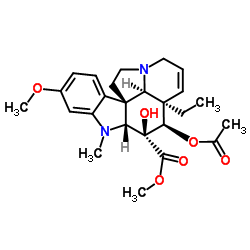
Vindoline structure
|
Common Name | Vindoline | ||
|---|---|---|---|---|
| CAS Number | 2182-14-1 | Molecular Weight | 456.531 | |
| Density | 1.3±0.1 g/cm3 | Boiling Point | 569.8±50.0 °C at 760 mmHg | |
| Molecular Formula | C25H32N2O6 | Melting Point | 163-165ºC | |
| MSDS | Chinese USA | Flash Point | 298.4±30.1 °C | |
| Symbol |

GHS08 |
Signal Word | Warning | |
Use of VindolineVindoline, a vinca alkaloid extracted from the leaves of Catharanthus roseus, weakly inhibits tubulin self-assembly[1]. |
| Name | vindoline |
|---|---|
| Synonym | More Synonyms |
| Description | Vindoline, a vinca alkaloid extracted from the leaves of Catharanthus roseus, weakly inhibits tubulin self-assembly[1]. |
|---|---|
| Related Catalog | |
| References |
| Density | 1.3±0.1 g/cm3 |
|---|---|
| Boiling Point | 569.8±50.0 °C at 760 mmHg |
| Melting Point | 163-165ºC |
| Molecular Formula | C25H32N2O6 |
| Molecular Weight | 456.531 |
| Flash Point | 298.4±30.1 °C |
| Exact Mass | 456.226044 |
| PSA | 88.54000 |
| LogP | 2.20 |
| Vapour Pressure | 0.0±1.6 mmHg at 25°C |
| Index of Refraction | 1.626 |
| Storage condition | -20°C |
|
SECTION 1: Identification of the substance/mixture and of the company/undertaking Product identifiers Product name: Vindoline REACH No.: A registration number is not available for this substance as the substance or its uses are exempted from registration, the annual tonnage does not require a registration or the registration is envisaged for a later registration deadline.
CAS-No.: 2182-14-1 Relevant identified uses of the substance or mixture and uses advised against Identified uses: Laboratory chemicals, Manufacture of substances SECTION 2: Hazards identification Classification of the substance or mixture Classification according to Regulation (EC) No 1272/2008 Germ cell mutagenicity (Category 2), H341 For the full text of the H-Statements mentioned in this Section, see Section 16. Classification according to EU Directives 67/548/EEC or 1999/45/EC Xn HarmfulR68 For the full text of the R-phrases mentioned in this Section, see Section 16. Label elements Labelling according Regulation (EC) No 1272/2008 Pictogram Signal wordWarning Hazard statement(s) H341Suspected of causing genetic defects. Precautionary statement(s) P281Use personal protective equipment as required. Supplemental Hazardnone Statements Other hazards - none SECTION 3: Composition/information on ingredients Substances : Methyl (2β,3β,4β,5α,12R,19α)- 4-(Acetyloxy)-6,7-didehydro-3-hydroxy- Synonyms 16-methoxy-1-methylaspidospermidine-3-carboxylate CAS-No.: 2182-14-1 EC-No.: 218-558-0 Hazardous ingredients according to Regulation (EC) No 1272/2008 ComponentClassificationConcentration Aspidospermidine-3-carboxylic acid, 4-(acetyloxy)-6,7-didehydro-3-hydroxy-16-methoxy-1-methyl-, methyl ester, (2β,3β,4β,5α,12β,19α)- CAS-No.2182-14-1Muta. 2; H341<= 100 % EC-No.218-558-0 Hazardous ingredients according to Directive 1999/45/EC ComponentClassificationConcentration Aspidospermidine-3-carboxylic acid, 4-(acetyloxy)-6,7-didehydro-3-hydroxy-16-methoxy-1-methyl-, methyl ester, (2β,3β,4β,5α,12β,19α)- CAS-No.2182-14-1Xn, R68<= 100 % EC-No.218-558-0 For the full text of the H-Statements and R-Phrases mentioned in this Section, see Section 16 SECTION 4: First aid measures Description of first aid measures General advice Consult a physician. Show this safety data sheet to the doctor in attendance. If inhaled If breathed in, move person into fresh air. If not breathing, give artificial respiration. Consult a physician. In case of skin contact Wash off with soap and plenty of water. Consult a physician. In case of eye contact Flush eyes with water as a precaution. If swallowed Never give anything by mouth to an unconscious person. Rinse mouth with water. Consult a physician. Most important symptoms and effects, both acute and delayed The most important known symptoms and effects are described in the labelling (see section 2.2) and/or in section 11 Indication of any immediate medical attention and special treatment needed no data available SECTION 5: Firefighting measures Extinguishing media Suitable extinguishing media Use water spray, alcohol-resistant foam, dry chemical or carbon dioxide. Special hazards arising from the substance or mixture Carbon oxides, nitrogen oxides (NOx) Advice for firefighters Wear self contained breathing apparatus for fire fighting if necessary. Further information no data available SECTION 6: Accidental release measures Personal precautions, protective equipment and emergency procedures Use personal protective equipment. Avoid dust formation. Avoid breathing vapours, mist or gas. Ensure adequate ventilation. Evacuate personnel to safe areas. Avoid breathing dust. For personal protection see section 8. Environmental precautions Prevent further leakage or spillage if safe to do so. Do not let product enter drains. Methods and materials for containment and cleaning up Pick up and arrange disposal without creating dust. Sweep up and shovel. Keep in suitable, closed containers for disposal. Reference to other sections For disposal see section 13. SECTION 7: Handling and storage Precautions for safe handling Avoid contact with skin and eyes. Avoid formation of dust and aerosols. Provide appropriate exhaust ventilation at places where dust is formed. For precautions see section 2.2. Conditions for safe storage, including any incompatibilities Store in cool place. Keep container tightly closed in a dry and well-ventilated place. Store under inert gas. Specific end use(s) Apart from the uses mentioned in section 1.2 no other specific uses are stipulated SECTION 8: Exposure controls/personal protection Control parameters Components with workplace control parameters Exposure controls Appropriate engineering controls Handle in accordance with good industrial hygiene and safety practice. Wash hands before breaks and at the end of workday. Personal protective equipment Eye/face protection Safety glasses with side-shields conforming to EN166 Use equipment for eye protection tested and approved under appropriate government standards such as NIOSH (US) or EN 166(EU). Skin protection Handle with gloves. Gloves must be inspected prior to use. Use proper glove removal technique (without touching glove's outer surface) to avoid skin contact with this product. Dispose of contaminated gloves after use in accordance with applicable laws and good laboratory practices. Wash and dry hands. The selected protective gloves have to satisfy the specifications of EU Directive 89/686/EEC and the standard EN 374 derived from it. Full contact Material: Nitrile rubber Minimum layer thickness: 0,11 mm Break through time: 480 min Material tested:Dermatril® (KCL 740 / Z677272, Size M) Splash contact Material: Nitrile rubber Minimum layer thickness: 0,11 mm Break through time: 480 min Material tested:Dermatril® (KCL 740 / Z677272, Size M) data source: KCL GmbH, D-36124 Eichenzell, phone +49 (0)6659 87300, test method: EN374 If used in solution, or mixed with other substances, and under conditions which differ from EN 374, contact the supplier of the CE approved gloves. This recommendation is advisory only and must be evaluated by an industrial hygienist and safety officer familiar with the specific situation of anticipated use by our customers. It should not be construed as offering an approval for any specific use scenario. Body Protection impervious clothing, The type of protective equipment must be selected according to the concentration and amount of the dangerous substance at the specific workplace. Respiratory protection Where risk assessment shows air-purifying respirators are appropriate use a full-face particle respirator type N100 (US) or type P3 (EN 143) respirator cartridges as a backup to engineering controls. If the respirator is the sole means of protection, use a full-face supplied air respirator. Use respirators and components tested and approved under appropriate government standards such as NIOSH (US) or CEN (EU). Control of environmental exposure Prevent further leakage or spillage if safe to do so. Do not let product enter drains. SECTION 9: Physical and chemical properties Information on basic physical and chemical properties a) AppearanceForm: powder Colour: white b) Odourno data available c) Odour Thresholdno data available d) pHno data available e) Melting point/freezingno data available point f) Initial boiling point and no data available boiling range g) Flash pointno data available h) Evapouration rateno data available i) Flammability (solid, gas) no data available j) Upper/lowerno data available flammability or explosive limits k) Vapour pressureno data available l) Vapour densityno data available m) Relative densityno data available n) Water solubilityno data available o) Partition coefficient: n- no data available octanol/water p) Auto-ignitionno data available temperature q) Decompositionno data available temperature r) Viscosityno data available s) Explosive propertiesno data available t) Oxidizing propertiesno data available Other safety information no data available SECTION 10: Stability and reactivity Reactivity no data available Chemical stability Stable under recommended storage conditions. Possibility of hazardous reactions no data available Conditions to avoid no data available Incompatible materials Strong oxidizing agents Hazardous decomposition products Other decomposition products - no data available In the event of fire: see section 5 SECTION 11: Toxicological information Information on toxicological effects Acute toxicity LDLO Intraperitoneal - mouse - 400 mg/kg Remarks: Behavioral:Somnolence (general depressed activity). Behavioral:Excitement. Skin corrosion/irritation no data available Serious eye damage/eye irritation no data available Respiratory or skin sensitisation no data available Germ cell mutagenicity In vitro tests showed mutagenic effects which were not observed with in vivo test. Human Other cell types Result: positive Cytogenetic analysis Carcinogenicity IARC:No component of this product present at levels greater than or equal to 0.1% is identified as probable, possible or confirmed human carcinogen by IARC. Reproductive toxicity no data available Specific target organ toxicity - single exposure no data available Specific target organ toxicity - repeated exposure no data available Aspiration hazard no data available Additional Information RTECS: CJ0120000 To the best of our knowledge, the chemical, physical, and toxicological properties have not been thoroughly investigated. SECTION 12: Ecological information Toxicity no data available Persistence and degradability no data available Bioaccumulative potential no data available Mobility in soil no data available Results of PBT and vPvB assessment PBT/vPvB assessment not available as chemical safety assessment not required/not conducted Other adverse effects no data available SECTION 13: Disposal considerations Waste treatment methods Product Offer surplus and non-recyclable solutions to a licensed disposal company. Dissolve or mix the material with a combustible solvent and burn in a chemical incinerator equipped with an afterburner and scrubber. Contaminated packaging Dispose of as unused product. SECTION 14: Transport information UN number ADR/RID: -IMDG: -IATA: - UN proper shipping name ADR/RID: Not dangerous goods IMDG: Not dangerous goods IATA:Not dangerous goods Transport hazard class(es) ADR/RID: -IMDG: -IATA: - Packaging group ADR/RID: -IMDG: -IATA: - Environmental hazards ADR/RID: noIMDG Marine pollutant: noIATA: no Special precautions for user no data available SECTION 15: Regulatory information This safety datasheet complies with the requirements of Regulation (EC) No. 1907/2006. Safety, health and environmental regulations/legislation specific for the substance or mixture no data available Chemical Safety Assessment For this product a chemical safety assessment was not carried out SECTION 16: Other information Full text of H-Statements referred to under sections 2 and 3. H341Suspected of causing genetic defects. Muta.Germ cell mutagenicity Full text of R-phrases referred to under sections 2 and 3 Xn Harmful R68 Possible risk of irreversible effects. Further information Copyright 2014 Co. LLC. License granted to make unlimited paper copies for internal use only. The above information is believed to be correct but does not purport to be all inclusive and shall be used only as a guide. The information in this document is based on the present state of our knowledge and is applicable to the product with regard to appropriate safety precautions. It does not represent any guarantee of the properties of the product. Corporation and its Affiliates shall not be held liable for any damage resulting from handling or from contact with the above product. See and/or the reverse side of invoice or packing slip for additional terms and conditions of sale. |
CHEMICAL IDENTIFICATION
HEALTH HAZARD DATAACUTE TOXICITY DATA
|
| Precursor 8 | |
|---|---|
| DownStream 4 | |
|
Increased availability of tryptophan in 5-methyltryptophan-tolerant shoots of Catharanthus roseus and their postharvest in vivo elicitation induces enhanced vindoline production.
Appl. Biochem. Biotechnol. 168(3) , 568-79, (2012) Ten 5-methyltryprophan (5-MT)-resistant multiple shoot culture lines in three genotypes of Catharanthus roseus were selected in vitro. The variant shoot lines displayed a differential threshold tolera... |
|
|
Simultaneous determination of vinblastine and its monomeric precursors vindoline and catharanthine in Catharanthus roseus by capillary electrophoresis-mass spectrometry.
J. Sep. Sci. 34 , 2885-2892, (2011) Catharanthus roseus is an important dicotyledonous medicinal plant that contains various anticancer components, such as vinblastine (VLB) and its monomeric precursors (vindoline and catharanthine). A ... |
|
|
Catharanthine C16 substituent effects on the biomimetic coupling with vindoline: preparation and evaluation of a key series of vinblastine analogues.
Bioorg. Med. Chem. Lett. 20(22) , 6408-10, (2010) The examination of the catharanthine C16 substituent effects on the Fe(III)-promoted biomimetic coupling reaction with vindoline is detailed, confirming the importance of the presence of a C16 electro... |
| Aspidospermidine-3-carboxylic acid, 4-(acetyloxy)-6,7-didehydro-3-hydroxy-16-methoxy-1-methyl-, methyl ester, (2β,4β,5α,12β,19α)- |
| methyl (2β,3β,4β,5α,12β,19α)-4-(acetyloxy)-3-hydroxy-16-methoxy-1-methyl-6,7-didehydroaspidospermidine-3-carboxylate |
| Vindoline |
| 4-acetoxy-3-hydroxy-16-methoxy-1-methyl-6,7-didehydro-aspidospermidine-3-carboxylic acid methyl ester |
| (2b,3b,4b,5a,12b,19a)-4-(Acetyloxy)-6,7-didehydro-3-hydroxy-16-methoxy-1-methylaspidospermidine-3-carboxylic Acid Methyl Ester |
| Methyl (2β,4β,5α,12β,19α)-4-acetoxy-3-hydroxy-16-methoxy-1-methyl-6,7-didehydroaspidospermidine-3-carboxylate |
| Vindoline (8CI) |
| vindolin |
| EINECS 218-558-0 |
| Vindoline, (-)- |
![methyl (2S,3aR,3a1R,4R,5S,5aR,10bR)-4-acetoxy-3a-ethyl-2,5-dihydroxy-8-methoxy-6-methyl-2,3,3a,3a1,4,5,5a,6,11,12-decahydro-1H-indolizino[8,1-cd]carbazole-5-carboxylate Structure](https://image.chemsrc.com/caspic/258/867214-27-5.png) CAS#:867214-27-5
CAS#:867214-27-5 CAS#:108-24-7
CAS#:108-24-7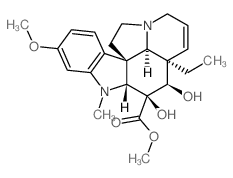 CAS#:3633-92-9
CAS#:3633-92-9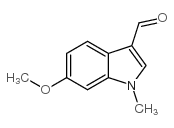 CAS#:202807-44-1
CAS#:202807-44-1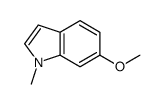 CAS#:1968-17-8
CAS#:1968-17-8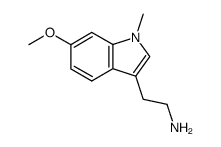 CAS#:64954-92-3
CAS#:64954-92-3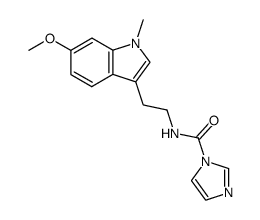 CAS#:867214-12-8
CAS#:867214-12-8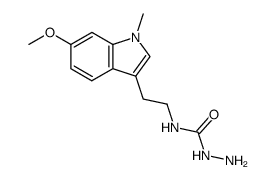 CAS#:867214-10-6
CAS#:867214-10-6 CAS#:38390-45-3
CAS#:38390-45-3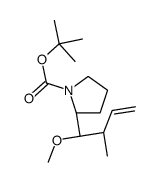 CAS#:363623-08-9
CAS#:363623-08-9 CAS#:23360-92-1
CAS#:23360-92-1
